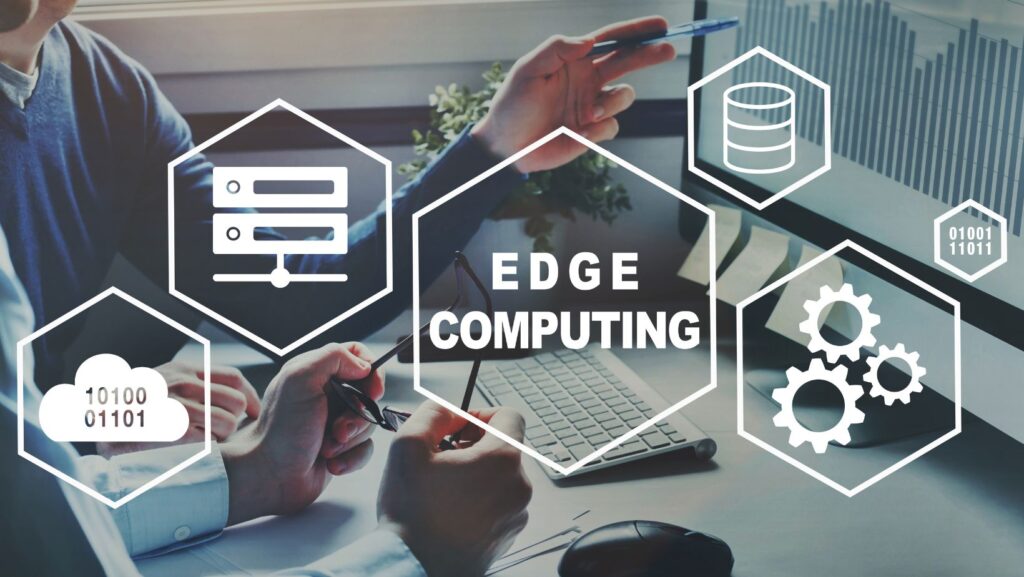

Today, you’ve probably encountered the dynamic duo of edge computing and cloud-based infrastructure. This powerful combination is revolutionizing how data is processed, managed, and utilized, offering unparalleled efficiency and speed.
Edge computing involves processing data near the source of data generation rather than relying solely on a centralized data center. This approach reduces latency, meaning the response time to data queries is significantly faster, crucial for real-time applications like autonomous vehicles, IoT devices, and smart grids.
Leveraging Reduced Latency for Enhanced Performance
In an ideal situation, business applications react in real-time, with analytics and decisions made almost instantaneously. Edge computing, when integrated with cloud-based infrastructure, brings this power.
By processing data closer to where it’s needed, you minimize the distance information must travel, significantly reducing delays and improving response times. This setup is ideal for industries where timing is critical, such as manufacturing, healthcare, and financial services, where milliseconds can mean the difference between success and failure.
Scaling with Flexibility: Cloud Capabilities
While edge computing offers the advantage of proximity, cloud-based infrastructure provides the scalability and flexibility you need to grow. The cloud allows you to store vast amounts of data and access expanded computing power on demand without the upfront costs of traditional data centers.
By integrating edge computing with the cloud, you combine the best of both worlds: local processing for immediate needs and centralized resources for comprehensive analytics and large-scale applications. This hybrid model ensures that your business can adapt quickly to changes in demand without sacrificing performance or security.
Locking Down Data Security and Compliance
Securing your network and ensuring compliance with data protection regulations are paramount. With edge computing, you can process sensitive data locally, reducing its exposure to external threats during transmission.
This is particularly beneficial for compliance with laws and regulations that require data to be processed within the exact geographical location where it is collected.

Additionally, integrating these local nodes with secure cloud services ensures that all data, whether processed at the edge or in the cloud, is protected with the latest in cybersecurity measures.
Optimizing Operations with Real-Time Insights
By harnessing the combined strengths of edge computing and cloud infrastructure, you can make decisions based on real-time data insights. This capability can dramatically enhance operational efficiency and enable proactive maintenance and management.
For instance, in a manufacturing context, sensors can detect anomalies in equipment performance and trigger immediate local processing at the edge. Simultaneously, broader performance trends and analytics are managed in the cloud, providing a holistic view of operations that helps prevent downtime and optimize production schedules.
Streamlining Workflow with Edge and Cloud Integration
Integrating edge computing with cloud-based infrastructure also streamlines your workflow, making it more efficient.
Data that requires immediate action is processed locally at the edge, reducing the load on your central servers and minimizing traffic on your network. This speeds up processing times, reduces bandwidth costs, and improves overall system responsiveness.
Building a Resilient Technology Ecosystem
Combining edge computing and cloud infrastructure builds a resilient technology ecosystem for your business. This resilience is critical in facing both cyber threats and physical disruptions.

By decentralizing data processing and storage, you create a more robust system that can maintain operations even if one part of the network is compromised or goes down.
Driving Innovation Through Integrated Technologies
Adopting a strategy that incorporates edge computing and cloud-based infrastructure places your business at the forefront of innovation.
This approach accelerates processing speeds, optimizes data security, and offers the scalability needed to adapt to future technological advancements and market demands.
As you continue to wade through the complexities of modern IT infrastructure, you must realize that integrating edge and cloud computing is not just about keeping up with current trends—it’s about setting the stage for future success.












